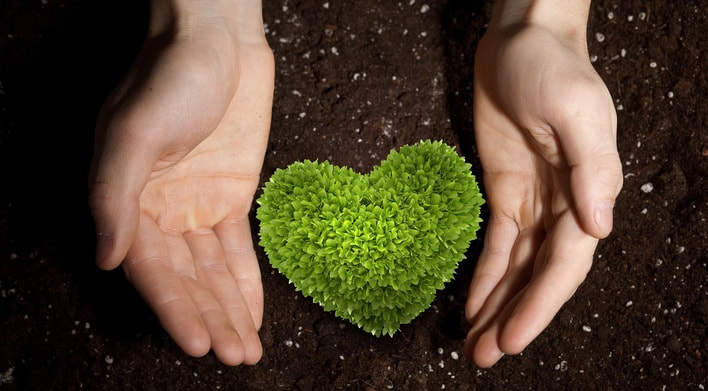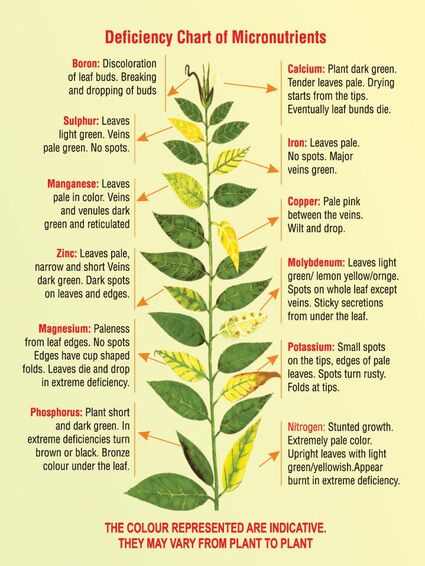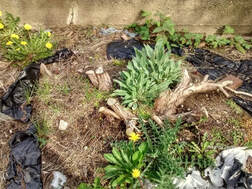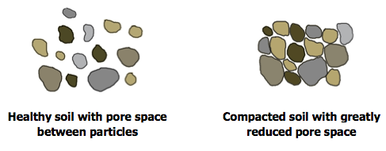|
Mottos of a healthy and sustainable landscape: Plant a 10 cent plant in a 10 dollar hole. Feed the soil, not the plants. Welcome to our Garden Inspiration Blog! We’re glad you’ve found us. This particular blog is more technical and detailed than our previous blogs. What you’ll learn here is one of the most essential building blocks of creating a healthy, sustainable home garden. Improving your soil organically will save you money too -- money you’d waste on chemicals and replacement plants. Believe it or not, soil is not dirt. Dirt is the stuff you wash off your hands or sweep off the sidewalk, undesirable stuff to get rid of. Soil, on the other hand, is an ecosystem, a diverse and intricate mix of minerals, organic matter and a range of flora, fauna, and fungi. (plantnebraska.org) If you want healthy grass and plants, feed the soil, not the plant. “Plants need the right combination of nutrients to live, grow and reproduce. Whether you are planting grass, perennials, shrubs, trees or crops, soil anchors plant roots. Soil serves as a storehouse for nutrients. When plants suffer from malnutrition, they show symptoms of being unhealthy, because they are a living organism. Too little or too much of any one nutrient can cause problems.” (University of Arizona Cooperative Extension) “Soil consists of minerals, air, water, organic matter, and microorganisms. Poor soils lack one or more of these essentials, making it challenging, if not impossible to grow healthy plants. (plantnebraska.org) The mineral portion is made up of small fragments of rocks that have disintegrated from weathering. Thus, each region's soil is unique due to the native subterranean rocks. The organic portion is composed of plant and animal remains in various stages of decomposition. This breakdown of matter creates humus, adds stability to soil, buffers the pH, and is effective at storing carbon. The quantity of water and air in soil depends on the soil's texture and structure." (example: clay, sand, silt) (Penn State)
Practices Harmful to your Soil Landscaping Fabric Have you used landscaping fabric and: Still have weeds? Plants look weak and are dying? Landscaping fabric appears to be the obvious cure for preventing weeds. It does more harm than good to your soil and the plants. Eventually, within a few years, organic matter accumulates on top, weeds still grow and their roots can penetrate through the landscaping fabric. Landscaping fabric does not promote healthy plant growth or support healthy soil, which we know, is the anchor of all vigorous plants. The holes cut in the fabric strangle plants as they mature, as well as stop perennials or groundcovers from spreading because they do not have contact with the soil. The fabric prevents organic material from decomposing in the soil. It also inhibits worms and other beneficial insects from doing their role because they cannot travel through the fabric to decompose organic matter or aerate the soil. During heavy rain events, water runs off quickly. The slick surface increases the speed of water movement, thus washing away mulch and preventing absorption of the water into the soil. Soil Compaction Soil Compaction occurs when soil particles are pressed together. It is the reduction of soil volume due to external factors, like pedestrian traffic, cars, riding mowers, and heavy machinery. Consequently, compacted soil has a reduced rate of both water infiltration and drainage. To prevent soil compaction, control traffic in your garden with paths. Protect mature plantings when building homes, additions or buildings. Final Words
If you would like more detailed information, check out this article on soils and plant nutrients for the home gardener from the NC State Extension.
1 Comment
1/13/2022 02:12:09 am
"Feed the soil, not the plants." -- Make sense. Thank you for sharing this article.
Reply
Your comment will be posted after it is approved.
Leave a Reply. |
Thank you for finding us! Holly and I have collaborated to bring you informative, fun, and seasonal garden inspiration blogs.
Subscribe to receive our blogs on the 1st and 15th of the month--Gwen Follow my landscape & garden design Pinterest Page to see more pics, inspiration and Gwen's home garden journey!
AuthorsGwen Wisniewski: Landscape and Garden Designer. Contact me. Let me help you integrate these garden inspirations. Choose the links below to find out more about my landscape design service or to make an appointment. |






 RSS Feed
RSS Feed